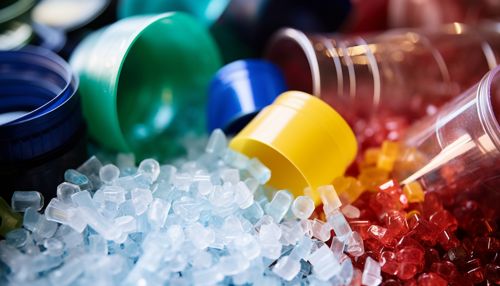Recycling Codes
Introduction
Recycling codes are symbols that are imprinted or embossed on the bottom of plastic products to identify the type of plastic used in the product. These codes, also known as Resin Identification Codes (RICs) or plastic recycling numbers, are used worldwide to facilitate the recycling process. They were developed by the Society of the Plastics Industry (now the Plastics Industry Association) in 1988.
History
The introduction of recycling codes was a significant step towards promoting and simplifying the recycling of plastics. Before these codes were introduced, identifying and sorting different types of plastics was a complex and time-consuming process. The Society of the Plastics Industry, recognizing the need for a standardized system, developed the Resin Identification Code system. This system was later adopted by various countries and organizations, including the American Society for Testing and Materials (ASTM).
Types of Recycling Codes
There are seven types of recycling codes, each representing a different type of plastic resin. These codes are:
Code 1: Polyethylene Terephthalate (PET or PETE)
Polyethylene Terephthalate (PET or PETE) is a clear, strong and lightweight plastic that is widely used for packaging foods and beverages, especially convenience-sized soft drinks, water, and juice. PET is also used for packaging peanut butter, salad dressings, oil, cosmetics and household cleaners.
Code 2: High-Density Polyethylene (HDPE)
High-Density Polyethylene (HDPE) is a rigid, high tensile strength plastic that is used in products and packaging such as milk jugs, detergent bottles, margarine tubs, and garbage containers.
Code 3: Polyvinyl Chloride (PVC or V)
Polyvinyl Chloride (PVC or V) is a versatile plastic that is used in a variety of products. PVC is used for packaging, insulation of wires, and in goods such as piping, vinyl siding, gutters, window frames, and shower curtains.
Code 4: Low-Density Polyethylene (LDPE)
Low-Density Polyethylene (LDPE) is a flexible plastic used in a variety of applications. LDPE is used to make containers, dispensing bottles, wash bottles, tubing, and various molded laboratory equipment.
Code 5: Polypropylene (PP)
Polypropylene (PP) is a robust plastic that is resistant to many acids and bases. PP is used for packaging, textiles, stationery, plastic parts and reusable containers of various types.
Code 6: Polystyrene (PS)
Polystyrene (PS) is a versatile plastic that can be rigid or foamed. PS is widely used for packaging, disposable cutlery, and in the making of models.
Code 7: Other
Code 7 is used to designate other types of plastic resins not covered by the first six codes or those made from more than one resin. These plastics include polycarbonate, polylactic acid, acrylonitrile butadiene styrene, and polyamide among others.
Recycling Process
The recycling process begins with the collection of materials. Once collected, the materials are sorted according to their recycling codes. After sorting, the plastics are cleaned to remove any impurities. The cleaned plastics are then shredded into small pieces. These pieces are melted and remolded into new products.
Importance of Recycling Codes
Recycling codes play a crucial role in the recycling process. They help in identifying the type of plastic, which in turn determines the recycling process to be used. Moreover, they also help in preventing the mixing of different types of plastics, which can lead to a lower quality of recycled product.
Challenges
Despite the benefits, the use of recycling codes also presents several challenges. One of the main challenges is the lack of public awareness and understanding of the codes. Many people are not aware of the meaning of the codes and hence do not use them correctly. Another challenge is that not all types of plastics are recyclable, even if they carry a recycling code.
Future of Recycling Codes
The future of recycling codes lies in improving their effectiveness and ease of use. This could be achieved through public education and awareness campaigns, as well as through technological advancements that make the recycling process more efficient.


